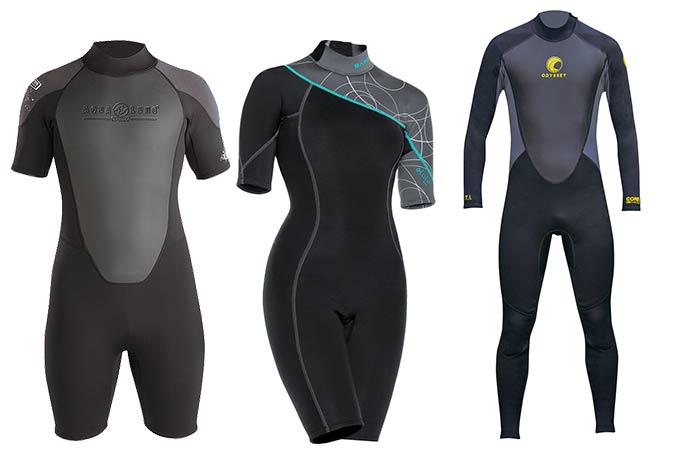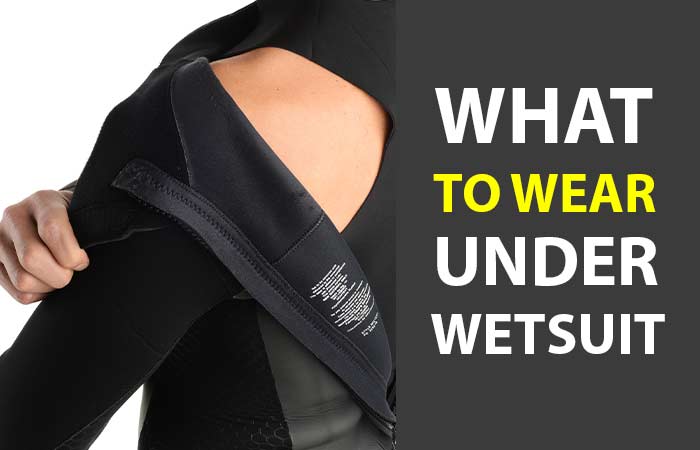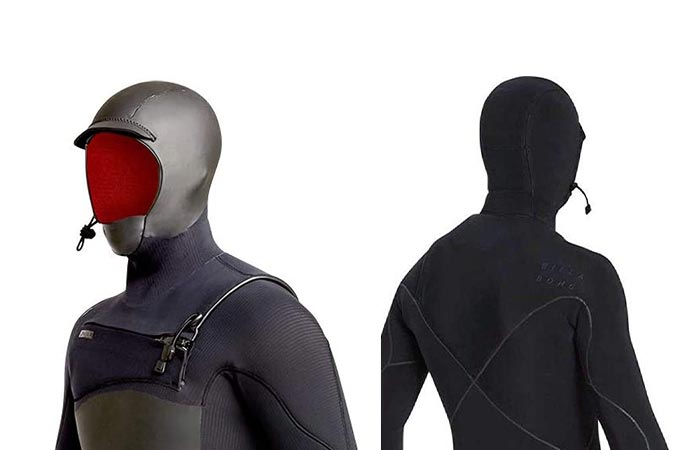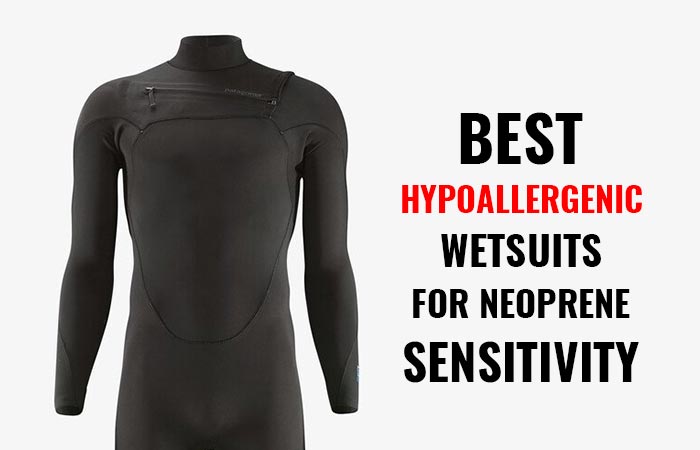How to Properly put on a Wetsuit, Remove+ Dos & Don’ts
Wetsuits are one of the best pieces of equipment you need if you spend some time in or on the water. While they give you all the protection you need, they can be quite tough putting on especially if you don’t know how to properly do it. They look simple yet can be a headache if you don’t plan well.
This is a guide on how to put on your wetsuit in several easy ways. The one thing you need to know is that there are many types of wetsuits all suited to different conditions. The simple ones in the form of vests, shorts and trunks are easy to put on. We’re concerned with the complex ones especially the full body wetsuits.
The Easiest Way
The easiest way to put on a wetsuit involves starting with the legs upwards. This allows you to use your hands with ease as the hands will be the last part of the wetsuit to put on. This can be done in the steps below:
1. Put on Protective Gear
If you use your wetsuit with protective gear, it’s the first thing you should start with. For those who are reactive to neoprene and rubber, you can use a rash suit or rash guard often made of Lycra to prevent direct contact with the wetsuit. If you don’t need one, head over to the next step.
2. Prepare the Wetsuit
The suit will need to be opened up by unzipping it, removing any locks and buttons that may be locked. In this state, you should be able to see the suit with a distinct shape from the hands, legs and torso. Often, the zips are on the back side of it. Make sure they’re in working condition and can close and open with ease.
3. Start Putting It on from the Legs
Roll up the suit then sit or stand on one leg while unrolling it up the other foot. Move it all the way up to the thigh then start putting it on the other leg. Make sure there are no folds or creases on either foot when you’re putting it on. If the suit has any padding, make sure it’s properly aligned to the part of the body it’s meant to protect.
4. Put the Wetsuit on Your Torso and Hip Region
Pull the suit on either side of the hips at the same time to give yourself a snug feeling around the crotch and hip region. Make sure that the pockets are flat and not bulging outward. Also, this region should be without any creases or wrinkles to minimize the loss of heat from the body.
You can get a better fit if you jump up and down while pulling the suit up. Just don’t overdo it such that ankles are too exposed. Also, if you feel it’s too loose or restrictive, get a smaller or larger wetsuit respectively.
5. Insert the Arms
Next up, start putting on one arm after the other. The best way to do this is to use one arm to put it on the other till the suit is up to your chest then do the same for the other arm. Neoprene can be pricked with sharp nails and you thus need to be careful this time one. Roll the suit upwards as you did with the legs.
6. Zip it Up
When the wetsuit is snugly fitting the body, zip it up. If the zip is at the front, you can do it yourself. Be careful not to hurt your skin while doing it. If the zip is on the back, you’ll need someone else to do it for you. Some wetsuits come with an extension on the zip which can be pulled upwards even when it’s on the back.
7. Lock the Wetsuit
To make the wetsuit even more watertight, close the Velcro fastenings at the neck and over the zip after zipping it up. This gives it a secure fit which gives you the assurance of a warm suit when diving or surfing.
8. Test the Fit
Once the suit is in place, try the fit by doing some movements with the body such as raising your knees, walking around, rotating your shoulders and others. You can also do a squat and some jumps to gauge how comfortable you will be.
If you feel the suit is tight and restrictive, you need a bigger one. If it’s too loose such that there are many areas of the body that aren’t in contact with the skin, you need to get a smaller suit. You should have such a fit that it’s close to the body but not too tight to make you uncomfortable.
Taking it off will be these steps but in the reverse order. Always wash your wetsuit after using it in the water.
Other Ways of Wearing a Wetsuit
The other methods of putting on a suit will depend on the type of wetsuit you have. The main types of wetsuits and their respective methods of putting them on are as follows:
Spring suit
The spring suit is a full body wetsuit but without the arms (from the elbows) and the lower parts of the legs from the knee downwards. To wear this one, you start with the legs, the torso then the upper part of the suit.
Short john wetsuit
The short john wetsuit covers the torso but has short legs and no sleeves at all. This is also worn from the legs upwards.
Long john wetsuit
The long john wetsuit is a full body wetsuit but without the sleeves. This should also be worn from the legs upwards finishing up with the upper part.
Wetsuit vest
Designed like a vest, this one is among the easiest to put on since you simply put it on like a normal vest.
Bottoms
The wetsuit bottom is either a pair of shorts or leggings covering up to the waist. You wear them just like normal shorts or leggings from the bottom upwards.
Wetsuit jacket
The wetsuit jacket has a zipper at the front and is worn more or less like a normal jacket. You simply insert the arms then zip it up and you’re good to go.
The short arm steamer
The short arm steamer covers the whole body except the forearms (elbow to wrist). It’s worn just like the full suit starting with the legs upwards.
The most noticeable aspect is that, as long as the wetsuit has a bottom part, you start with the lower parts making it much easier to put on the upper part.
How to Quickly Remove a Wetsuit
Tips: DOs & Don’ts When Wearing Wetsuits
When wearing a wetsuit, focus on the following aspects.
The Dos
- Use a plastic bag: a plastic bag can be used to make it easier to put on the suit. You simply place the plastic bag around your foot then slip on the wetsuit. The wetsuit will simply slide unto your leg without much difficulty.
- Start with the wetsuit rolled inside out: instead of struggling to pull the wetsuit on your body in stages, you can instead turn in inside out then simply roll in on your body starting with the legs, the torso and the arms as in the stages outlined above.
- Use a dive skin with the wetsuit: dive skins offer extra protection especially from the cold, coral and jellyfish. They’re a type of rash guard made of Lycra that is worn directly on the skin then a wetsuit is worn over it. Besides the extra protection, they also make it easy to put the wetsuit on and off. Leotards and pantyhose can also be used for the same purpose.
- Install a custom zipper: with the toughest area on your wetsuit being the ankles and wrists, you can instead have zippers installed on them. You’ll have less resistance when wearing the wetsuit as you simply pull it over your legs and wrists then zip them up. With some zippers being failure points, you can instead go for wetsuits with built-in zippers on the wrists and ankles as these have better designs that won’t allow too much of water circulation.
- Blow air into the wetsuit: another way to make it easier to put on your wetsuit is blowing air into the suit. For this one, someone else will help you. After pulling over the arm or leg of the suit, they blow some air into the suit from the side of the wrist or ankle. The result is that the air will break the contact between the skin and the wetsuit making it much easier to wear it.
- Wear the suit in water: wearing the suit in water makes it quite easy since the water provides the needed lubrication to slip the suit on. The fact that the suit will still get wet makes it the more convenient to put it on in the water.
- Add some lubrication: you only need lubrication at the ankles and wrists to have your suit slipping on and off the body quite fast. Always use a water-based lubricant and not an oil-base done. The oil-based one will instead degrade the neoprene in your suit and eventually destroy it.

The Don’ts
- Avoid oil-based lubricants: as stated above, oil-based lubricants will spoil your wetsuit as they react with the neoprene thus reducing its quality. Only use water-based ones. Oil-based lubricants include petroleum jelly, grease and others.
- Avoid chemicals and soaps as lubricants: soaps, shampoos and even conditioners should never be used as lubricants with your wetsuit. The reason for this is that they’ll damage your suit as they damage the neoprene. Besides that, they’re not biodegradable and will thus affect the water. Lastly, they may dry out your skin as they’re meant to be washed off and not to sit on your skin for long.
- Don’t use a wetsuit that’s too tight: there is the risk of injury, restricted movement and even damage to the suit if it’s too tight. You can tell a suit is too tight if it restricts breathing, blood flow, movements and it’s generally so stretched that it doesn’t conform to the shape of the body.
- Don’t use jewelry: jewelry can cut your wetsuit if it has sharp edges on it.
Keep these in mind to attain the best use of your wetsuit.
More on Wetsuits
- How do Wetsuits Work?
- What are Wetsuits Made of? Types & Top Brands
- Wetsuits Colors: Why Black? What is the Best Color?
- Wetsuit vs Dry Suit
- What to Wear Under Wetsuit: Female, Men & Triathlons Undergarments
- How Tight/Fitting should a Wetsuit be?
- Wetsuit Thickness Guide + Temperature Chart
- How to Dry a Wetsuit + Best Drying Hangers & Racks
- Wetsuit Storage and Care Tips
Best Wetsuits







